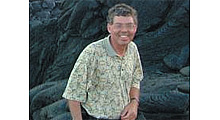
Doug Lung
The FCC's Los Angeles Enforcement Bureau cited Brookfield Office Properties, owner of the Ernst & Young Plaza building in Los Angeles for operating industrial, scientific and medical equipment and causing harmful interference in violation of FCC rules. The equipment involved is the same that caused problems at another location: GE UltraMax two-lamp fluorescent ballasts. The ballasts were interfering with a Verizon Wireless 700 MHz LTE cell site.
FCC agents first visited the building on April 30 last year and informed the building's property manager that Verizon Wireless had alleged the GE ballasts were the source of the radio emissions causing the interference. The property manager acknowledged that Verizon had already contacted him and said that Brookfield's lighting contractor was still investigating the problem.
(GE was aware that a small number of the UltraMax ballasts could cause interference and had issued a product bulletin explaining how to identify the problem modules and exchange them.)
The agents gave the building’s property manager a copy of the GE bulletin.
One week later, the Los Angeles FCC office issued a warning letter to Brookfield, advising it to investigate the lighting ballasts used in the building and to provide the office with an interim report within 30 days and a final report within 60 days concerning its investigation. (As of last week, neither report had been received.)
The interference to Verizon Wireless continued and on Nov. 21, 2013, agents from the Los Angeles field office used portable direction-finding equipment and confirmed radio emissions on Verizon Wireless' licensed 700 MHz frequency were emanating from the fluorescent lights and ballasts inside the Ernst & Young Plaza building. The agents also observed the ballast in use was a GE UltraMax with a product and date code covered in the GE bulletin.
On Feb. 7, 2014, the District Director of the Los Angeles office of the FCC Enforcement Bureau issued a Citation and Order # C201432900003 stating, “Brookfield should take steps to come into compliance with the Rules, including eliminating the interference. Brookfield is hereby on notice that if it subsequently engages in any conduct of the type described in this Citation, including any violation of Sections 18.111(b) or 18.115(a) of the Rules, it may be subject to civil and criminal penalties, including but not limited to substantial monetary fines (forfeitures). Such forfeitures may be based on both the conduct that led to this Citation and the conduct following it.”
Brookfield is required to respond within 30 days after the Citation was released with the specific actions taken to preclude recurrence of the violations, signed under the penalty of perjury. The Citation notes that:
“If, after receipt of this Citation, Brookfield again violates Section 18.111(b) or 18.115(a) of the Rules by engaging in conduct of the type described herein, the Commission may impose monetary forfeitures not to exceed $16,000 for each such violation or each day of a continuing violation, and up to $112,500 for any single act or failure to act. Further, as discussed above, such forfeitures may be based on both the conduct that led to the Citation and the conduct following it.
The Citation further noted that violation of the Communications Act or FCC Rules could also result in seizure of equipment and criminal sanctions, including imprisonment.
I'm pleased to see the FCC responding so forcefully to this case of interference, but wonder how long these ballasts were also spewing RF garbage over the upper UHF TV band and interfering with TV reception around the building.
If Verizon hadn't observed the interference and reported it, I wonder if anyone else would have discovered it. As this is the second case in which the FCC has cited a business for operating lighting fixtures that cause interference, I wonder how many of these fixtures are still in use, causing interference to wireless broadband and likely to UHF TV stations as well.
The professional video industry's #1 source for news, trends and product and tech information. Sign up below.

Doug Lung is one of America's foremost authorities on broadcast RF technology. As vice president of Broadcast Technology for NBCUniversal Local, H. Douglas Lung leads NBC and Telemundo-owned stations’ RF and transmission affairs, including microwave, radars, satellite uplinks, and FCC technical filings. Beginning his career in 1976 at KSCI in Los Angeles, Lung has nearly 50 years of experience in broadcast television engineering. Beginning in 1985, he led the engineering department for what was to become the Telemundo network and station group, assisting in the design, construction and installation of the company’s broadcast and cable facilities. Other projects include work on the launch of Hawaii’s first UHF TV station, the rollout and testing of the ATSC mobile-handheld standard, and software development related to the incentive auction TV spectrum repack. A longtime columnist for TV Technology, Doug is also a regular contributor to IEEE Broadcast Technology. He is the recipient of the 2023 NAB Television Engineering Award. He also received a Tech Leadership Award from TV Tech publisher Future plc in 2021 and is a member of the IEEE Broadcast Technology Society and the Society of Broadcast Engineers.
